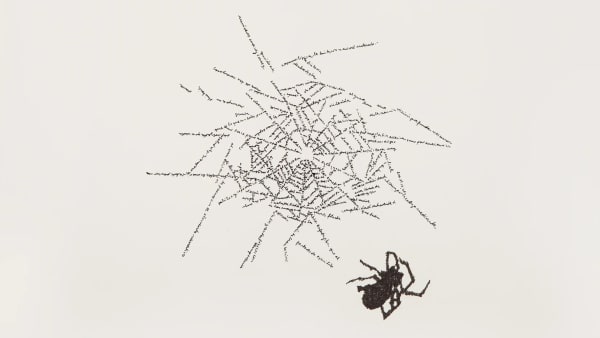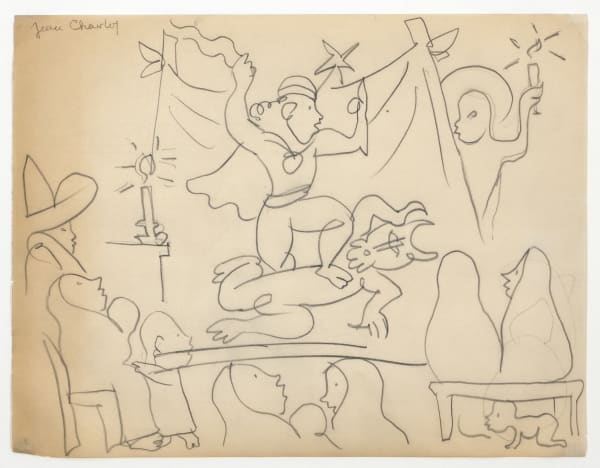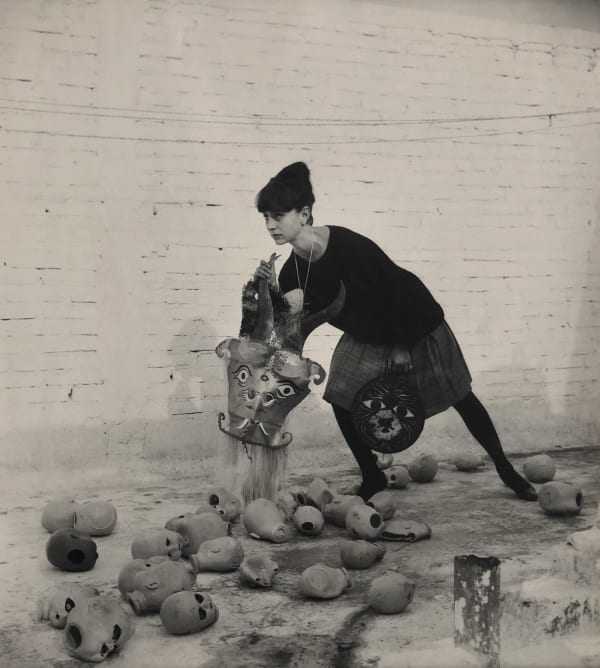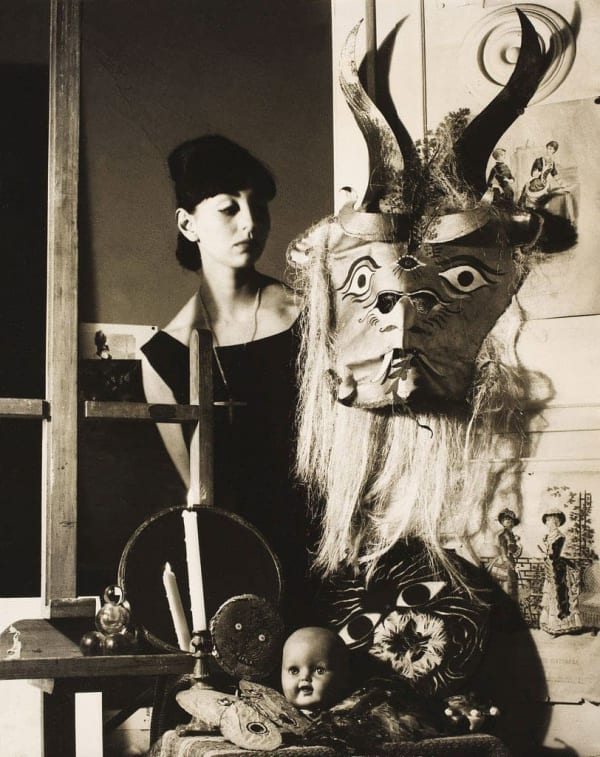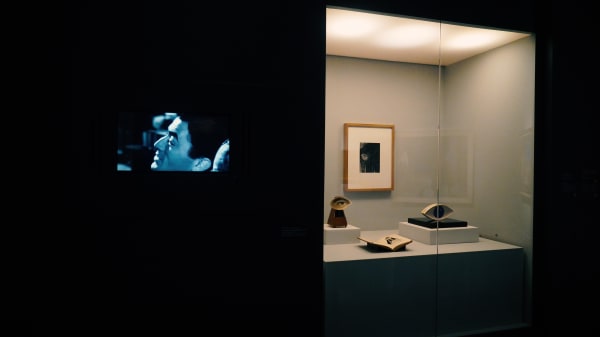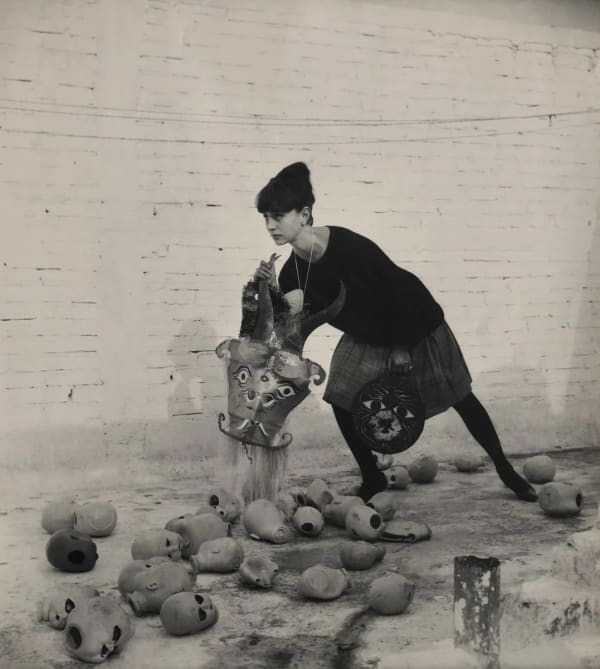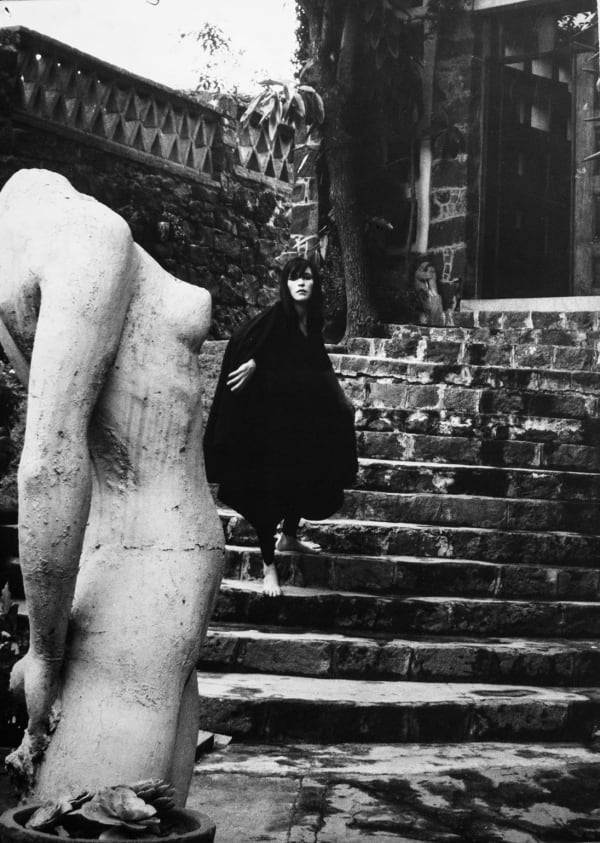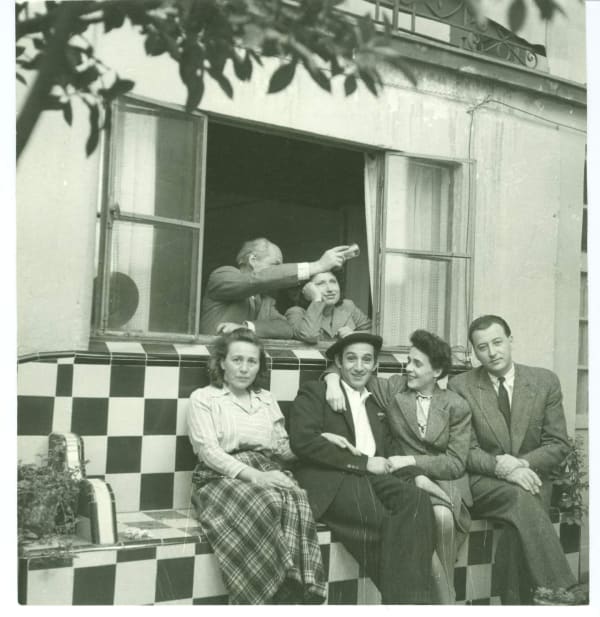Kati Horna Mexican, 1912-2000
Kati Horna was born and raised in the Austrian-Hungarian Empire to a Jewish family, later moving to Berlin for an education. The subject matter in her photography revolves around the politics and aftermath of the European interwar period she lived through. Her Surrealist photographs show moments during the wars through the lens of a woman, working in a time when photography was a male-dominated industry.
Her time spent in Berlin as a teenager shaped her interest in photography, introducing her to Surrealist, Bauhaus, and Constructivist art. After moving to Budapest in her twenties, she became an apprentice for the notable photographer József Pesci, in addition to taking classes in photography at a reputable photography school. It was in Budapest where she met acclaimed photographer Robert Capa, a close friend, and an important influence in Horna’s life. She was inspired by his political photography and focused her work on depicting those impacted by the war, specifically women. She moved to Paris in 1933, where her interest in Surrealism continued.
In 1939 after the Nazi’s occupation of France, Horna fled Paris, moved to Mexico, and fell in love with the country. During her time in Mexico, she worked on a handful of magazines on graphics, editing, and photography, and later became a photography professor until 1963. Horna worked as a photographer for such publications as Nosotros, Mujeres, Mexico This Month, and Diseño. In 1962 she created the series Fetiche (Fetish), for the influential if short-lived magazine S.nob, which offered the photographer unique opportunities for creative exploration. Between 1958 and 1968 she was the photography editor for Mujeres, a publication dedicated to women writers, artists, and other cultural agents.
Her work is in the permanent collections of institutions including the Museum of Modern Art, New York, NY; the Hammer Museum, UCLA, Los Angeles, CA; Metropolitan Museum of Art, New York, NY; Reina Sofía, Madrid, Spain; CRAI Biblioteca Pavelló de la Republica, Universitat de Barcelona, Spain; Mercantil Cultura Collection; the Getty Museum, the Museum of Fine Arts, Houston, and the Rijksmuseum, Amsterdam.
-
 Kati HornaBeatriz Sheridan, 1962Vintage Silver gelatin print (matte)7 x 7.5 in
Kati HornaBeatriz Sheridan, 1962Vintage Silver gelatin print (matte)7 x 7.5 in
17.8 x 19.1 cm -
 Kati HornaEl botellón, from the series Paraísos artificiales, 1962Vintage gelatin silver print9.84 x 8 in
Kati HornaEl botellón, from the series Paraísos artificiales, 1962Vintage gelatin silver print9.84 x 8 in
25 x 20.3 cm -
 Kati HornaLeonora, from the series Oda a la necrofilia, (Ode to necrophilia), 1962Vintage gelatin silver print9.84 x 8 in
Kati HornaLeonora, from the series Oda a la necrofilia, (Ode to necrophilia), 1962Vintage gelatin silver print9.84 x 8 in
25 x 20.3 cm -
 Kati HornaLeonora, from the series Oda a la necrofilia, (Ode to necrophilia), 1962Vintage gelatin silver print (matte)9.84 x 8 in
Kati HornaLeonora, from the series Oda a la necrofilia, (Ode to necrophilia), 1962Vintage gelatin silver print (matte)9.84 x 8 in
25 x 20.3 cm -
 Kati HornaLeonora, from the series Oda a la necrofilia, (Ode to necrophilia), 1962Vintage Silver gelatin print (matte)8 x 7.5
Kati HornaLeonora, from the series Oda a la necrofilia, (Ode to necrophilia), 1962Vintage Silver gelatin print (matte)8 x 7.5
20.3 x 19.1 cm -
 Kati HornaUntitled, from the series Una noche en el sanatorio de muñecas (A Night at the Doll Hospital), 1962Vintage gelatin silver print7.5 x 9.75 in
Kati HornaUntitled, from the series Una noche en el sanatorio de muñecas (A Night at the Doll Hospital), 1962Vintage gelatin silver print7.5 x 9.75 in
19.1 x 24.8 cm -
 Kati HornaUntitled, from the series Una noche en el sanatorio de muñecas (A Night at the Doll Hospital), 1962Vintage gelatin silver print8.60 x 7.75 in
Kati HornaUntitled, from the series Una noche en el sanatorio de muñecas (A Night at the Doll Hospital), 1962Vintage gelatin silver print8.60 x 7.75 in
21.8 x 19.7 cm -
 Kati HornaUntitled, from the series Una noche en el sanatorio de muñecas (A Night at the Doll Hospital), 1962Vintage gelatin silver print9.5 x 7.75 in
Kati HornaUntitled, from the series Una noche en el sanatorio de muñecas (A Night at the Doll Hospital), 1962Vintage gelatin silver print9.5 x 7.75 in
24.1 x 19.7 cm -
 Kati HornaUntitled, from the series Una noche en el sanatorio de muñecas (A Night at the Doll Hospital), 1962Vintage gelatin silver print9.25 x 7.5 in
Kati HornaUntitled, from the series Una noche en el sanatorio de muñecas (A Night at the Doll Hospital), 1962Vintage gelatin silver print9.25 x 7.5 in
23.5 x 19.1 cm -
 Kati HornaUntitled, Mexico, 1962Vintage gelatin silver photomontage (matte)9.84 x 8 in
Kati HornaUntitled, Mexico, 1962Vintage gelatin silver photomontage (matte)9.84 x 8 in
25 x 20.3 cm -
 Kati HornaMujer con máscara, from the series Mujer y máscara, 1961Vintage gelatin silver print9.5 x 7.75 in
Kati HornaMujer con máscara, from the series Mujer y máscara, 1961Vintage gelatin silver print9.5 x 7.75 in
24.1 x 19.7 cm -
 Kati HornaUntitled, from the series Mujer y Mascara, 1961Vintage gelatin silver print8.5 x 7.75 in
Kati HornaUntitled, from the series Mujer y Mascara, 1961Vintage gelatin silver print8.5 x 7.75 in
21.6 x 19.7 cm -
 Kati HornaPortrait of Leonora Carrington, 1960/1987Silver Gelatin Print (collage)9.50 x 7.10 in
Kati HornaPortrait of Leonora Carrington, 1960/1987Silver Gelatin Print (collage)9.50 x 7.10 in
24.1 x 18 cm -
 Kati HornaRemedios Varo, Mexico, 1960Vintage gelatin silver print9.5 x 7.75 in
Kati HornaRemedios Varo, Mexico, 1960Vintage gelatin silver print9.5 x 7.75 in
24.1 x 19.7 cm -
 Kati HornaCartel publicitario (Leonora Carrington como modelo), 1957Vintage gelatin silver photo montage (matte)5.5 x 4.5 in
Kati HornaCartel publicitario (Leonora Carrington como modelo), 1957Vintage gelatin silver photo montage (matte)5.5 x 4.5 in
14 x 11.4 cm -
 Kati HornaLa muñeca, Mexico, 1956Vintage gelatin silver print9.5 x 7.75 in
Kati HornaLa muñeca, Mexico, 1956Vintage gelatin silver print9.5 x 7.75 in
24.1 x 19.7 cm -
 Kati HornaLeonora Pintando, 1956Vintage gelatin silver print (matte)9.5 x 8 in
Kati HornaLeonora Pintando, 1956Vintage gelatin silver print (matte)9.5 x 8 in
24.1 x 20.3 cm -
 Kati HornaMuñeca, 1949; 1962Vintage gelatin silver (photomontage)7 x 8 in
Kati HornaMuñeca, 1949; 1962Vintage gelatin silver (photomontage)7 x 8 in
17.8 x 20.3 cm -
 Kati HornaUntitled, Mexico, 1949/1960gelatin silver print (Photomontage)8.10 x 8 in
Kati HornaUntitled, Mexico, 1949/1960gelatin silver print (Photomontage)8.10 x 8 in
20.6 x 20.3 cm -
 Kati HornaRemedios Varo and Gunther Gerzso at the Wedding of Leonora Carrington and Chiki Weisz, 1946Vintage gelatin silver print (matte)4.75 x 3.75 in
Kati HornaRemedios Varo and Gunther Gerzso at the Wedding of Leonora Carrington and Chiki Weisz, 1946Vintage gelatin silver print (matte)4.75 x 3.75 in
12.1 x 9.5 cm -
 Kati HornaUntitled, from the series Muñecas del miedo, Paris, 1939/1960gelatin silver print9.75 x 6.75 in
Kati HornaUntitled, from the series Muñecas del miedo, Paris, 1939/1960gelatin silver print9.75 x 6.75 in
24.8 x 17.1 cm -
 Kati HornaSubida a la Catedral, Barcelona, 1938/1960gelatin silver (photomontage)9 x 6.6 in
Kati HornaSubida a la Catedral, Barcelona, 1938/1960gelatin silver (photomontage)9 x 6.6 in
22.9 x 16.8 cm -
 Kati HornaUntitled, from the series Marchés aux puces, Paris, 1933/1960Silver Gelatin Print8 x 7.75 in
Kati HornaUntitled, from the series Marchés aux puces, Paris, 1933/1960Silver Gelatin Print8 x 7.75 in
20.3 x 19.7 cm -
 Kati HornaUntitled, from the series Marchés aux puces, Paris, 1933/1960Silver Gelatin Print6.75 x 6.90 in
Kati HornaUntitled, from the series Marchés aux puces, Paris, 1933/1960Silver Gelatin Print6.75 x 6.90 in
17.1 x 17.5 cm
-

Between Light and Shadow
Meer, February 10, 2025 -

Must See: "Between Light and Shadow" at Ruiz-Healy Art| New York
Artforum, February 7, 2025 -

Between Light and Shadow: A monochromatic exploration of identity and landscape at Ruiz-Healy Art
Artdaily, February 6, 2025 -

Ruiz-Healy Art's 2023 Year In Review
Ruiz-Healy Art, December 28, 2023
-

Kati Horna Ruiz-Healy Art | New York
Chloe Wyma, Artforum, June 1, 2023 -

KATI HORNA: IN MOTION
Artishock Revista, May 11, 2023 -

Mexican Photographer Kati Horna Collaborated With the Biggest Surrealist Stars of Her Day. Why Don’t We Know Her Name?
Katie White, Artnet News, May 5, 2023 -

Artforum "Must See Shows"
Artforum, March 22, 2023
-

Kati Horna's work, Boijmans Collection show, at Fine Arts Palace, Mexico City
Museum Boijmans Van Beuningen, June 9, 2022 -

MoMa’s New Exhibition Surveys a Century of Photographs by Women
Lydia Figes, AnOther, May 9, 2022 -

Exhibition Review: Kati Horna
DieuLinh , Musée Magazine, December 29, 2021 -

Kati Horna - A Modern Photographer Who Documented Both the Real World and the Surreal
Balasz Takac, Widewalls, December 14, 2021
-

Between Light and Shadow
February 6 - March 14, 2025 New York CityRuiz-Healy Art is pleased to present Between Light and Shadow, a group exhibition of works by Carlos Amorales, Modesto Bernardo, Johanna Calle, Jean Charlot, Felipe Ehrenberg, Demian Flores, Azteca de...Read more -

Kati Horna: In Motion
March 9 - May 19, 2023 New York CityRuiz-Healy Art is pleased to present Kati Horna: In Motion, a solo exhibition of works by Hungarian/Mexican photographer Kati Horna at our New York City gallery. This is Horna’s first...Read more
-
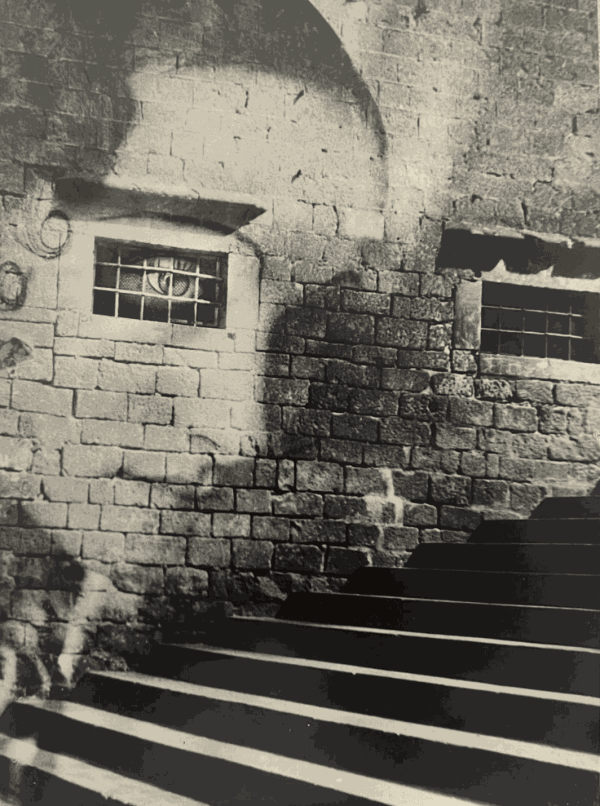
Kati Horna: In Motion
Ruiz-Healy Art, New York Ruiz-Healy Art, 2023 Read more -
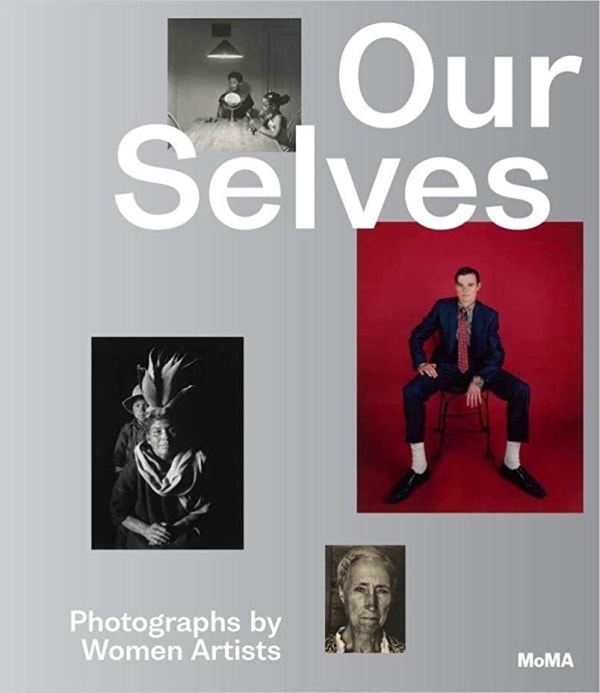
Our Selves: Photographs by Women Artists from Helen Kornblum I MoMA
Kati Horna & Graciela Iturbide I Essay by Roxana Marcoci, et al 2022Hardcover, 152 pagesRead more
Publisher: The Museum of Modern Art, New York
ISBN: 163345133X
Dimensions: 9.25 x 0.75 x 10.75 in -
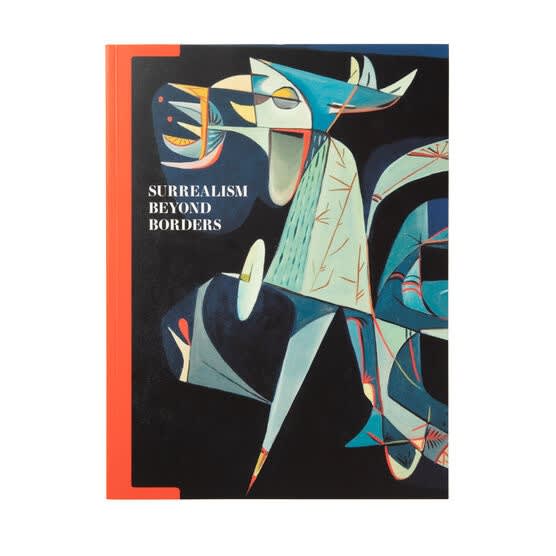
Surrealism Beyond Borders I The Metropolitan Museum of Art
Kati Horna I Editors: Stephanie D’Alessandro and Matthew Gale 2021Hardcover, 384 pagesRead more
Publisher: The Metropolitan Museum of Art
ISBN: 9781588397287
Dimensions: 8.75 x 1.5 x 11.75 in -
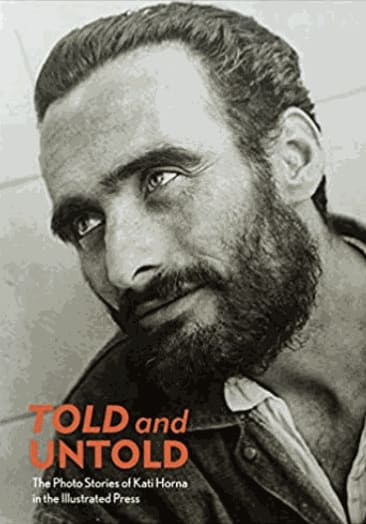
Told and Untold: The Photo Stories of Kati Horna in the Illustrated Press
Americas Society, New York. Ed. Gabriela L. Rangel 2016Hardcover, 188 pagesRead more
Publisher: Americas Society
ISBN: 1879128780
Dimensions: 7.8 x .8 x 10.7 in -
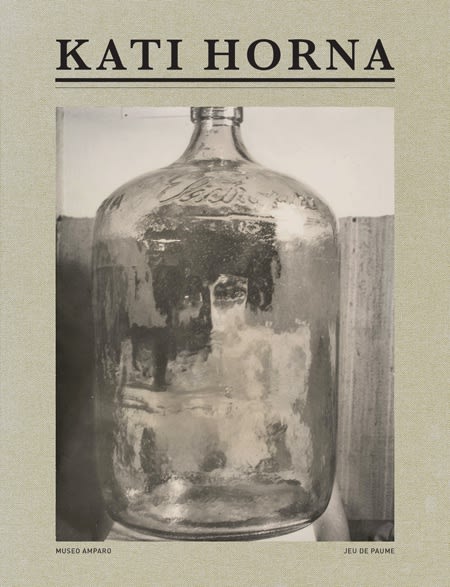
Kati Horna I Jeu de Paume, Paris & Museo Amparo, Puebla
Sergio Flores, Editor 2013Hardcover, 352 pagesRead more
Publisher: RM/Museo Amparo/Jeu de Paume
ISBN: 8415118732
Dimensions: 9.1 x 1.1 x 12 in -
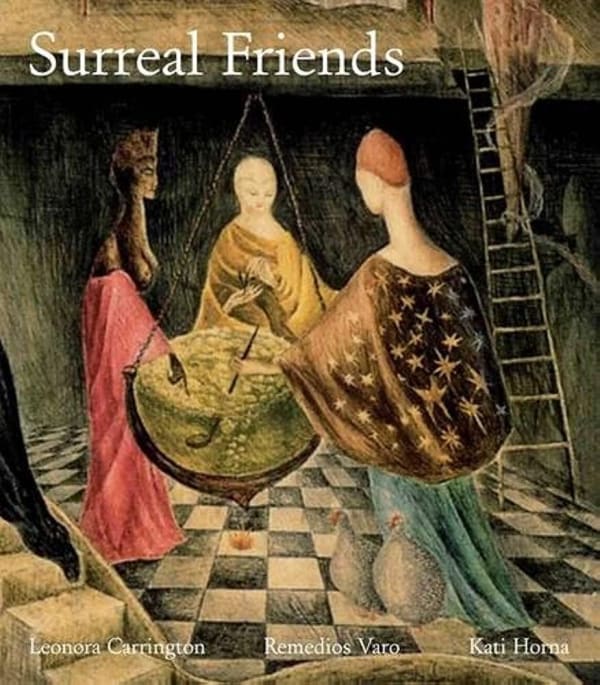
Surreal Friends: Leonora Carrington, Remedios Varo and Kati Horna
Editors: Joanna Moorhead, Teresa Arcq, and Stefan van Raaij 2010Hardcover, 144 pagesRead more
Publisher: Lund Humphries
ISBN: 1848220596
Dimensions: 8.27 x 0.7 x 10.24 in -

Kati Horna: Recuento de una obra
Author Emma Cecilia García Krinsky 1995Hardcover, 167 pagesRead more
Publisher: CENIDIAP-INBA
ISBN: 9709157000


























